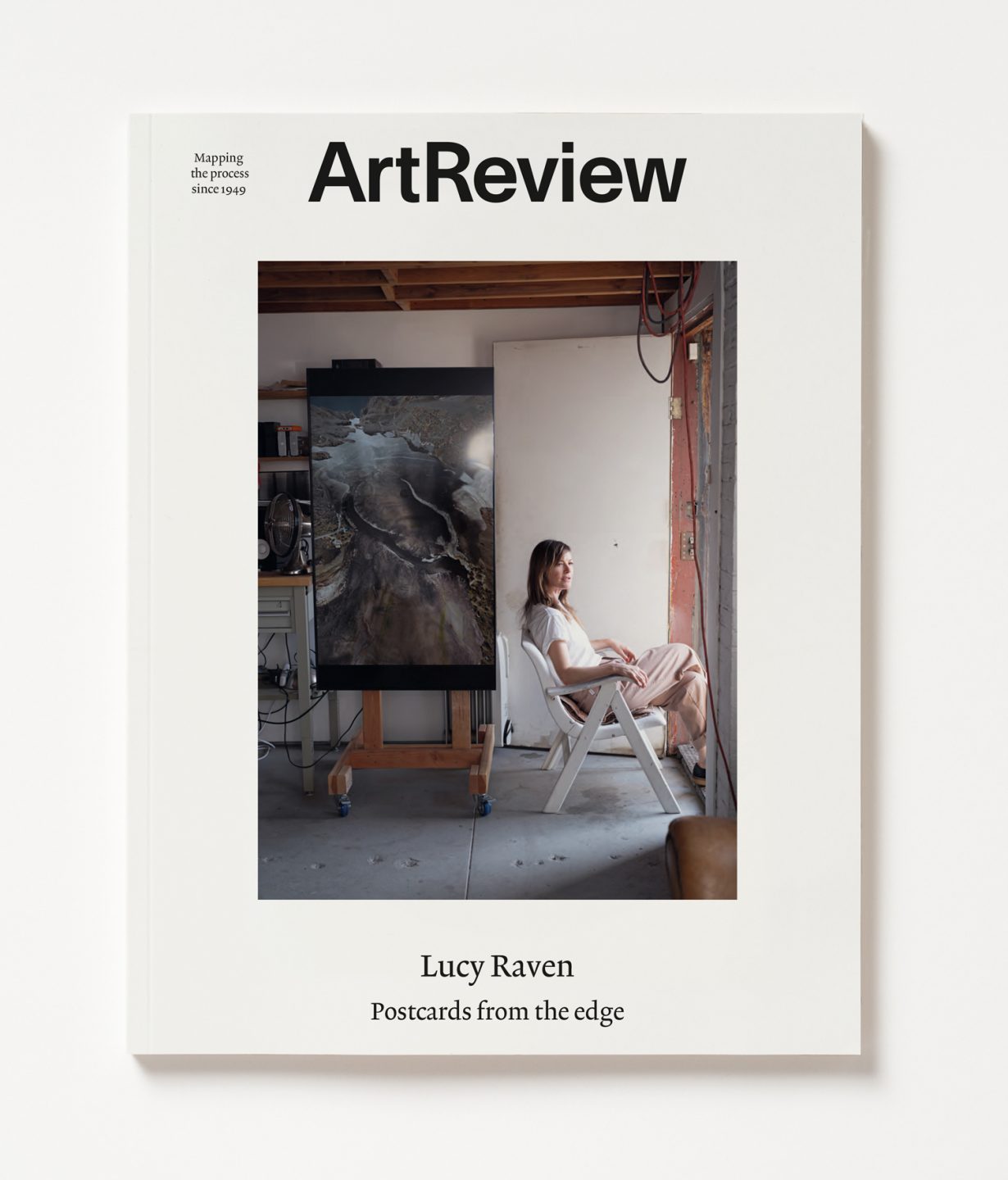
***Subscribe now or get your copy from our new online shop***
The October issue of ArtReview issue considers our relationship, current and historical, to our environment.
Lucy Raven, whose portrait is on the cover, captures the undoing and remaking of the landscape of the American West, and why those processes are both simpler and more complicated than they appear to be. Her latest work, Murderers Bar, focuses on the recent removal of four hydroelectric dams along the Klamath River in Oregon and California, capturing both the history and aftermath of the exploitation of the natural environment. ‘Restoration does not immediately mean resolution’, writes Fi Churchman, and the work’s power ‘lies in holding the viewer in suspense between the fractured imagery of ruin and renewal’.
The latest of ArtReview’s ‘Up Close’ features is Tom Denman’s analysis of Joy Gregory and Philip Miller’s 2021 video Observations: Rose. The work features audio interviews with Jamaicans who have moved to England and who speak to Gregory about their memories of ‘the green grass, the clear sky, the mountains’. A slideshow presents photos of the Caribbean island’s luscious vegetation, at one moment interrupted by images of London’s Kew Gardens, an institution with an imperial history that contains some of this same flora. Meanwhile, subtitles tell the story of a man who abuses an enslaved Black woman under the pretence of medical treatment. ‘In registering how history, memory and everyday experience inflect each other in varying, inexact ways,’ writes Denman, the work ‘demonstrates how an artwork can be deeply political without being didactic’.
Over the past 50 years, John Smith has built up a body of work that encourages us to think about how we see the world and our place within it. Martin Herbert rewatches and reflects on some of the artist’s films, which, the critic notes, find extraordinary in the ordinary: from an unremarkable neighbourhood street corner to the artist’s own comically generic first name. Smith’s combination of video and voiceover is often mordantly funny, sometimes surprisingly tender and ultimately a demonstration of how ‘when image and language are put together, narrative and truth become fluid. And yet, within this fluidity and urging that the viewer keep their eyes open, Smith finds truths about society and the deceptive power of media.’
Mikala Taidiscusses the work of lens-based artist Hayley Millar Baker, whose ongoing series of moving-image works each depicts a chronicle of a contemporary Indigenous haunting. The First Nations women who populate her films present as embodiments of their ancestral spirits. ‘While Baker draws on cinematic traditions of the horror genre to build unease and anticipation for the viewer, the protagonists, in contrast, appear indifferent… their ability to summon and move between time and realities seems entirely ordinary’.
Alice Godwin explores why Greenlandic artist Inuuteq Storch thinks photography is uniquely suited to telling the story of his homeland. The artist’s perspective remains personal, offering images of friends, family and daily existence, offering ‘honest portrayals [that] dispel mythologies surrounding the world’s largest island and permit a deeper understanding of individuals on their own terms’.
Also in this issue, Chris Fite-Wassilak annotates H.P. Lovecraft’s 1927 essay ‘Supernatural Horror in Literature’; Jenny Wu speaks with Thelma Golden ahead of the Studio Museum’s reopening in New York next month; Emily May talks to choreographer Akram Khan about his latest production, Thikra: Night of Remembering; and Joanna Walsh argues that much of the most innovative published writing is unpaid – but, she asks, would you work for free? Plus, reviews of exhibitions across the globe, including the 36th Bienal de São Paulo, William Kentridge in Spoleto, Trajal Harrell in Pantin, Amy Sillman in New York, Jesse Darling in Berlin; and reviews of books by Claire-Louise Bennett, Shrikant Verma, R.F. Kuang and more.
***Subscribe now or get your copy from our new online shop***